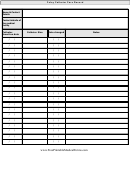

In addition, with a control that is somewhat like drawing a 3D picture, users can create 3D data within a VR workspace.
#Catheter virtaal reality tracking software
A piece of VR production software developed by a startup can import 3D CAD data and 3D model files and enables the user to intuitively edit the design using VR. The company is actively developing their business by holding many events in various places nationwide.Īs an example of VR application in the construction and engineering industry, there is a VR tool for construction design. A theme park in Japan has already introduced this system in one of its attractions. Players wearing a head-mounted display and an armband sensor move around the field and use their hands to imitate attacks.

Having being funded by a major venture capital fund as well, the company is expected to maintain stable business activities in the future.Ī startup based in Tokyo is developing an AR system that provides a new type of sports game. This company develops an eye tracking VR headset that the wearer can control with eye movements. Although the system currently uses a video game controller, the plan is to support other hardware as well, and the company has already started to collaborate with several hardware companies.Īnother startup was able to raise over $480,000 from 1,500 supporters around the world in just two months with crowdfunding. A robot in a remote place moves and talks on behalf of the user as if the user was actually in the same place. While many companies in various industries are interested in VR as a potential market, Japanese startups that develop VR technologies are also gaining attention, some of which have even succeeded in large-scale fundraising.Ī telepresence technology that is being developed by a startup uses VR to synchronize the user’s movement with a robot. research firm, forecasts that the worldwide shipments of AR and VR hardware combined will reach 10 million units in 2016 and grow to past 110 million units in 2020.

By 2025, AR and VR are expected to be used in applications including video games, healthcare, engineering, live events and video entertainment, of which media applications will account for nearly half of the market. The reason for the AR market being larger is because more people are expected to use AR due to lower hardware prices compared to VR.Īs mentioned above, Goldman Sachs has projected the AR and VR market to expand to $80 billion by 2025. According to several research firms, the hardware and software market for VR is expected to grow significantly in the next 5 to 10 years.Īccording to research conducted by Digi-Capital, a British investment bank, AR/VR revenue is expected to grow from approximately $5 billion in 2016 to $120 billion in 2020, with AR contributing $90 billion and VR contributing $30 billion. The year 2016 is known as the year of VR.


 0 kommentar(er)
0 kommentar(er)
